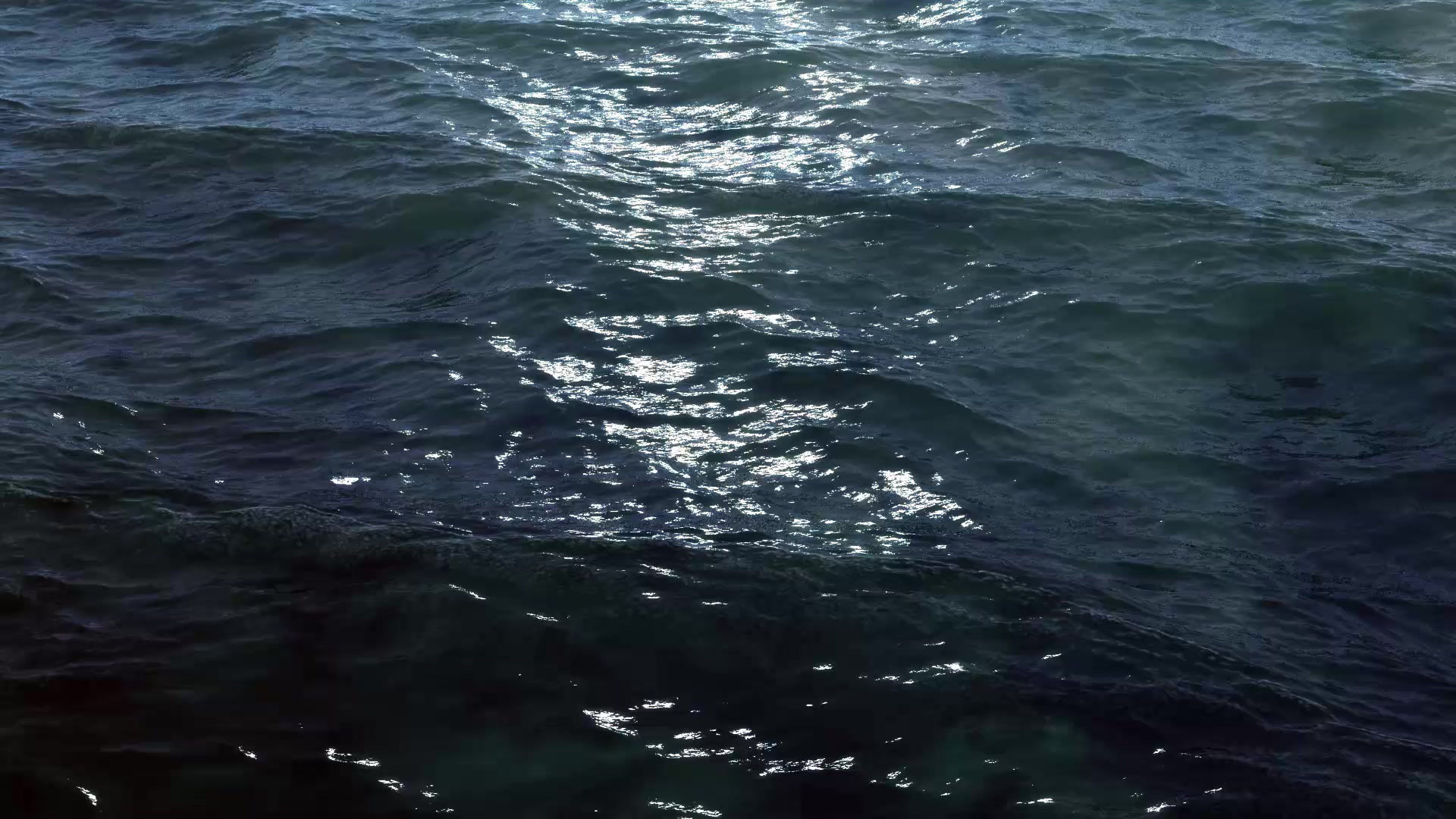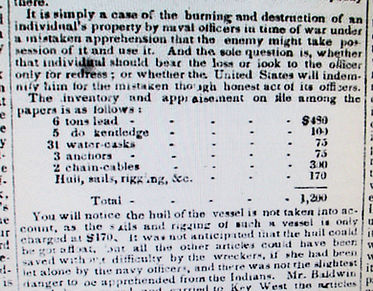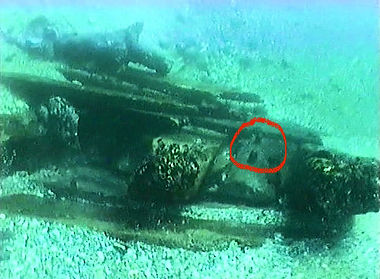

Typical brig of the time



Original deposition from a crewmember of the brig that also mentions the 2 cannon.. Part of the Senate report of what Mr. Baldwin was claiming for damages. Cannon believed salvaged from the brig. Credit: MAC/Bill Raymond. Photo: S. Singer,



The Wreck of the GIL BLAS
Back in the 1970’s, local historian Dr. Cooper Kirk was researching the history of Broward County when he uncovered information about a shipwreck that tied into this area’s history. When the first Europeans came to this area, the Tequesta Indians were living here, but by the mid 1700’s they were gone, likely from disease, hostilities, etc. brought here by them. The first recorded settlement on the New River was by two Bahamian brothers in the 1780’s. By the 1830’s, there was a substantial settlement on the New River where downtown Ft. Lauderdale is today and was the largest white settlement in SE Florida except for Key West. William Cooley, who lived at New River, served as Justice of the Peace and Appraiser of Wrecks in 1835. While Justice of the Peace, Cooley had previously sent some white men to Key West for trial after they killed a local Seminole Chief which ended in acquittal for all (read on for relevance).
After a hurricane struck the SE coast of Florida in Sept. 1835, the 200 ton Spanish brig Gil Blas, wrecked about one mile north of present-day Hillsboro Inlet with a cargo of cigars & sugar. Her ballast consisted of tons of 200 lbs. lead ingots and iron kentledge (blocks of iron). Wreck reports say north of the New River (note that the mouth of the New River changed constantly back then and eventually became present-day Port Everglades Inlet.) William Cooley had the only vessel not damaged, and the brig’s captain hired him to take him and his crew to Key West with some of the cargo. The captain then sold all they brought with them but also the brig as she lay wrecked off the beach to the highest bidder. The brig was relatively undamaged and could have been saved and it's unknown why the captain sold it without attempting to save it. Mr. John P. Baldwin bought the wreck at auction in December for $1,200, and he hired Cooley to save the brig and bring it to Key West.
When Cooley got back to the New River settlement, he hired several men there to help with the salvage of the brig. On Jan. 6, 1836, he sailed his 10-ton sloop from the New River Inlet (then located in Hollywood) to the wreck-site to begin salvage. News soon reached him that day that his family had been killed along with his children’s tutor. Unbeknownst to them, the Second Seminole War had just begun only a few days earlier. Remember the acquittal of the white men for killing a Seminole? It’s believed the Seminoles held Cooley responsible for that injustice as they said he withheld crucial evidence and is likely why his family was targeted.
All salvage work immediately stopped, and the men then scrambled back to the settlement to find that most had already fled to the Cape Florida Lighthouse and they soon followed. This was basically the end of any development in this area for another 50+ years. If the Gil Blas hadn’t wrecked, and Cooley and his men had remained at the settlement, would the Seminoles have still attacked? Would the area have developed differently? Been called Cooley County? Who knows.
The Gil Blas had all that lead still in its hull (around 6-8 tons of it), along with two cannons. Since the War was now going on, the Navy did not want the Seminoles to salvage the lead or cannons. The Navy then hired Cooley to bring them to the wreck in July of 1836. The two cannon were recovered (it’s believed a bronze carronade salvaged in the 1970’s off Indian Key is one of them-see attached photo-as its recorded they were brought there and one was lost there), and the hull was then set on fire. No lead was recovered and no mention whether it was still aboard or had been recovered already. Remember the wreck had sat for 6 months so who knows what could have been recovered. Bahamian wreckers, the Seminoles, a passing ship, any could have salvaged something, or even salvaged after it was burnt years later as storms cover & uncover wrecks along our coast.
The story doesn’t end there though. Mr. Baldwin having lost any opportunity to salvage anything from the wreck, later sued the govt. The case went before the U.S. Senate in 1849, where Mr. Baldwin lost his case by one vote, 22 Yeas vs 23 Nays.
I can’t say for sure when these wrecks were first discovered as treasure hunters Norman Scott, Mel Fischer, and local divers worked some wrecks off Hillsboro in the 60’s. Very rarely, wreckage would uncover off Hillsboro Beach in the area where the Gil Blas supposedly wrecked due to storms, winter currents, etc. and would then get buried again. With beach re-nourishment now a common practice, I haven’t seen these uncovered for the last 25 years. The Barefoot Mailman Wreck, off the old Barefoot Mailman Hotel (now identified as the L’Athenaise, wrecked in 1804), was one such wreck. A drunken captain, crew with fever, 184 French prisoners, deadly walk to St. Augustine, all tell the story of this unfortunate shipwreck. Cannons and other artifacts were recovered from it in the 60’s, and some were displayed at the Sands Hotel years ago. Her anchor now resides on the New River. A bit south of that wreck, some wreckage was discovered partially uncovered by a resident off her oceanfront home on Hillsboro Beach in the 1970’s. She then contacted the county Historical Commission. Dr. Kirk thought this could indeed be the wreck of the Gil Blas due to its location corresponding to what he’d researched. The first archaeological investigation was done in 1977 by the Marine Archaeological Council (MAC) along with a state archaeologist, but no conclusions were made. In the mid 1980’s, especially 1985, two areas around 180’ apart from each other were investigated under supervision of Peter Throckmorton, known as the father of modern underwater archaeology. It was concluded that these were two separate shipwrecks. The southernmost site was believed to be the Gil Blas, and the northernmost a later 1800’s wreck, which I think is possibly the Nova Scotia bark Georgie built in 1881. A magnetometer survey had gotten big hits northeast of the hull structure of the north site which turned out to be a large area of iron rigging. This plus other indicators ruled it out as being the Gil Blas though a detailed site survey & sketch was made of the remaining hull structure (see sketch/photo of remains under "Gallery" tab).
Wood analysis of the southern area showed it was built of oak which was a good indicator of a Spanish ship, plus copper/bronze nails/spikes & copper sheathing were found there. In 1997-8, as now President of MAC, I had gotten a new archaeological research permit from the State of Florida along with an Army Corps of Engineers dredge and fill permit to remove sand over the southern site. We uncovered the bow area, the midsection/keelson, & the starboard side of the hull to the stern area. The stern area, now missing, had laid on flat rock, and the rest up to the bow dropped off towards the beach and was buried in deep sand so it was still preserved. We never got to bedrock on this westernmost area and possibly some lead ingots were still buried in that deep sand which would have positively identified it as the Gil Blas. More copper sheathing was found (which the Gil Blas had), small ballast rocks and mortared ballast along the keelson too. The frames were “chalked framed”, which also put it in the time frame of the Gil Blas for that type of ship construction. Unfortunately, the few artifacts recovered and sent to the Graves Museum of Archaeology have all been lost after a change of management takeover of the museum and later closing.
All indications point to this site as being the Gil Blas. I doubt any further investigations will ever be carried out as beach restorations have placed more sand over the wreck and town restrictions prevent any boats from going anywhere near the beach now. For some video of the site, check "Video" tab.
Source: MAC archives; Bill Raymond, The Shipwreck of the Gil Blas, Broward Legacy, 1984; The Union, 1/3/1849.
Photos from the 97-98 Excavation. Top:
Keelson, frames, planking. Middle: Bow stem. Bottom: Side view of hull framing, inner/outer planking, wood trunnels visible (circled). Photos: S. Singer


-
Photo from 97 showing ID tags still attached to frames from 1985 excavation. The late Peter Throckmorton, known as the father of underwater shipwreck archaeology at the site in 85. Site sketch by MAC after the 97-8 investigations. Photos: S. Singer
